
Launching the Center for Trustworthy AI, a Global Movement
The Center for Trustworthy AI has been established by technology and legal partners with contributions from experts around the world because the achievement of Trustworthy AI is an effort that must be taken on by every user, every leader, and every organization that wishes to survive and thrive in the coming age. The Center for Trustworthy AI is the guiding beacon for organizations navigating this unprecedented wave of AI innovation.

A Call to Arms for Trustworthy AI: Can we trust Artificial Intelligence?
People and organizations around the world are asking, ”Can we trust artificial intelligence?”. Sure, can we trust AI to be responsible, to generate accurate, trustworthy responses to our prompts? But look more deeply and you will find that truly Trustworthy AI is about so much more. Do we trust that our investments in AI are wise, that we are not throwing effort and money after nonsense? Do we trust that we are moving rigorously, purposefully, and efficiently towards AI’s promised land?

A Moment of Reckoning for Humanitarian and Public Sector
Leaders of these organizations now face a moment of reckoning and—in the chaos of that moment—an opportunity to craft the modern, technologically nimble institutions resilient enough to continue delivering the crucial services upon which their publics so desperately depend. They must use technology to drive out cost, with the core thesis being that to emerge stronger, they must become more modern organizations that use technology to reduce cost and improve services, rather than viewing technology as an ever-expanding cost center. Those that seize the opportunity may survive. Those who let it slip away will fail.

Applying Modern Ecosystem-Oriented Architecture in PubSec
We’ve covered the Principles of Ecosystem-Oriented Architecture (EOA) and Mapping your Cloud Ecosystem in previous articles. We’ll now make the concepts discussed in those previous articles more real in context of Public Sector organizations. To do so, let’s spend some time speaking less about technology and begin describing workloads that incorporate functions and scenarios upon which a typical agency might rely on its cloud ecosystem to perform.
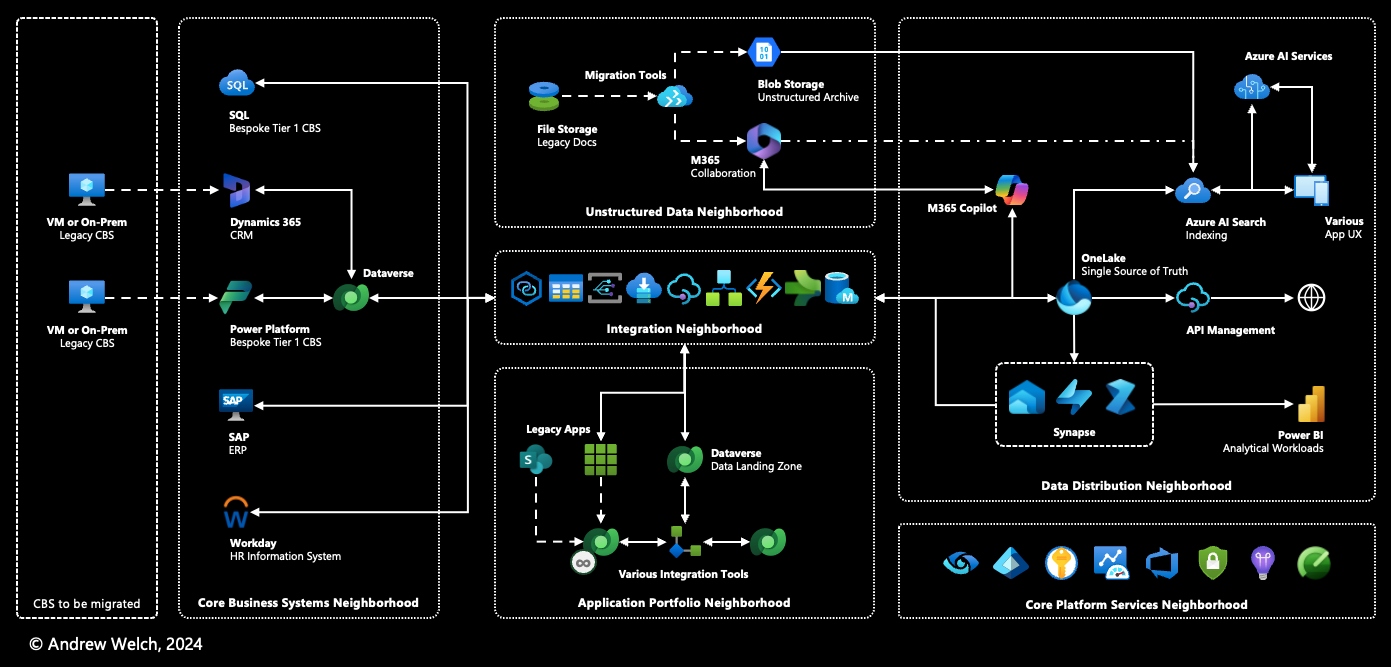
Mapping your Cloud Ecosystem: The Ecosystem Map
"Ecosystem Map" is both one of the 25 dimensions of the AI Strategy Framework and a foundational concept in ecosystem-oriented architecture (EOA), which makes this article doubly important reading for strategic thinkers on both fronts. The “map” metaphor is instructive here. It is used to distinguish an ecosystem map from the various forms of architectural diagrams, nearly all of which tend to include more technical minutiae than a typical ecosystem map. Whereas an architectural diagram provides specific parameters for specific technical solutions, an ecosystem map presents a higher-level, more visionary view of an organization’s cloud ecosystem. This analogy is fundamental to understanding and practicing EOA.

Principles of Ecosystem-Oriented Architecture
We were working with eight to ten years between major disruptions from the dawn of the consumer internet. But these “wave periods”, that is, the time between the crest of two waves, have shortened to three to five years since the rise of the public cloud. It makes sense: As the evolution of computing technology and capacity picks up steam, it similarly accelerates. Innovation begets innovation. Generative AI was only made possible by the incredible computing power and connectivity available in the cloud. Now, AI is further accelerating this pace of change, shortening the time we have available before new waves crash upon the shore. The grace period for organizations to get their act together and position themselves for the next wave is growing much shorter; the margin for error is much narrower.

Executive Vision and Actionable Roadmap for your AI Strategy
There’s an incredibly important transition in the broad information technology space that is often lost in the furor and excitement over generative AI. Simply “wanting AI” doesn’t cut it. So, the AI Strategy Framework begins with the Strategy and Vision pillar that sets forth five dimensions beginning with vision, extending to creating the actionable roadmap and architecture necessary to actualize that vision, and finally establishing the programmatic elements necessary to drive that vision to fruition. These dimensions help organizations formulate and take action on their big ideas.

"AI Strategy Framework" guides your organization's journey in the Age of AI
We’ve learned a great deal about maturity and readiness for - and responsibility to the ethics of - AI over the past year, as well. It’s now time for a proper model through which organizations may realistically assess their readiness to adopt and scale artificial intelligence, and then identify specific areas to invest time, talent, and funding along their journey. This AI Strategy Framework guides organizations as they construct their AI strategy atop five pillars, each with five dimensions to be considered, matured, and regularly evaluated.
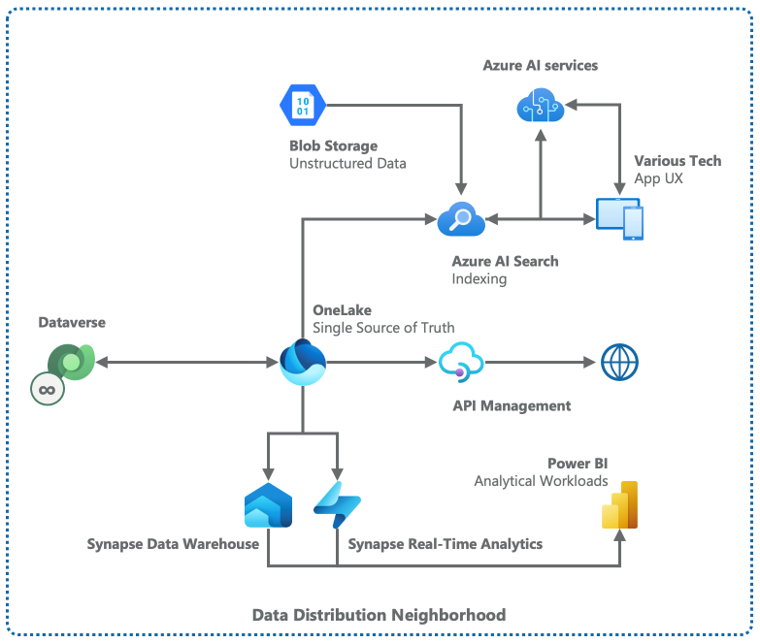
Data Distribution in Power Platform
When taking on the question of how Power Platform integrates with Azure data services, Point-to-Point, Data Consolidation, Master Data Node, and Data Distribution evolve a similar theme. Specifically, each focuses primarily on transactional data during any given users interaction with it. “Data Distribution” is different, focusing more on data distributed for analytics, enterprise search, integration with third-party or external sources via API, data science workloads, or training or augmenting a large language model (LLM). This blog overviews the Data Distribution pattern.

Five strategies to integrate Power Platform in your data platform architecture
When comparing architectural models for Power Platform, it’s important to avoid the instinct to choose just one. Instead, the goal is to explore various approaches that enable different scenarios for integrating Power Platform solutions with enterprise data. Each organization should strategically mix and match these approaches, considering factors like performance, flexibility, maintainability, and cost. This strategy allows for creating adaptable patterns within a cloud ecosystem where Power Platform plays a key role.
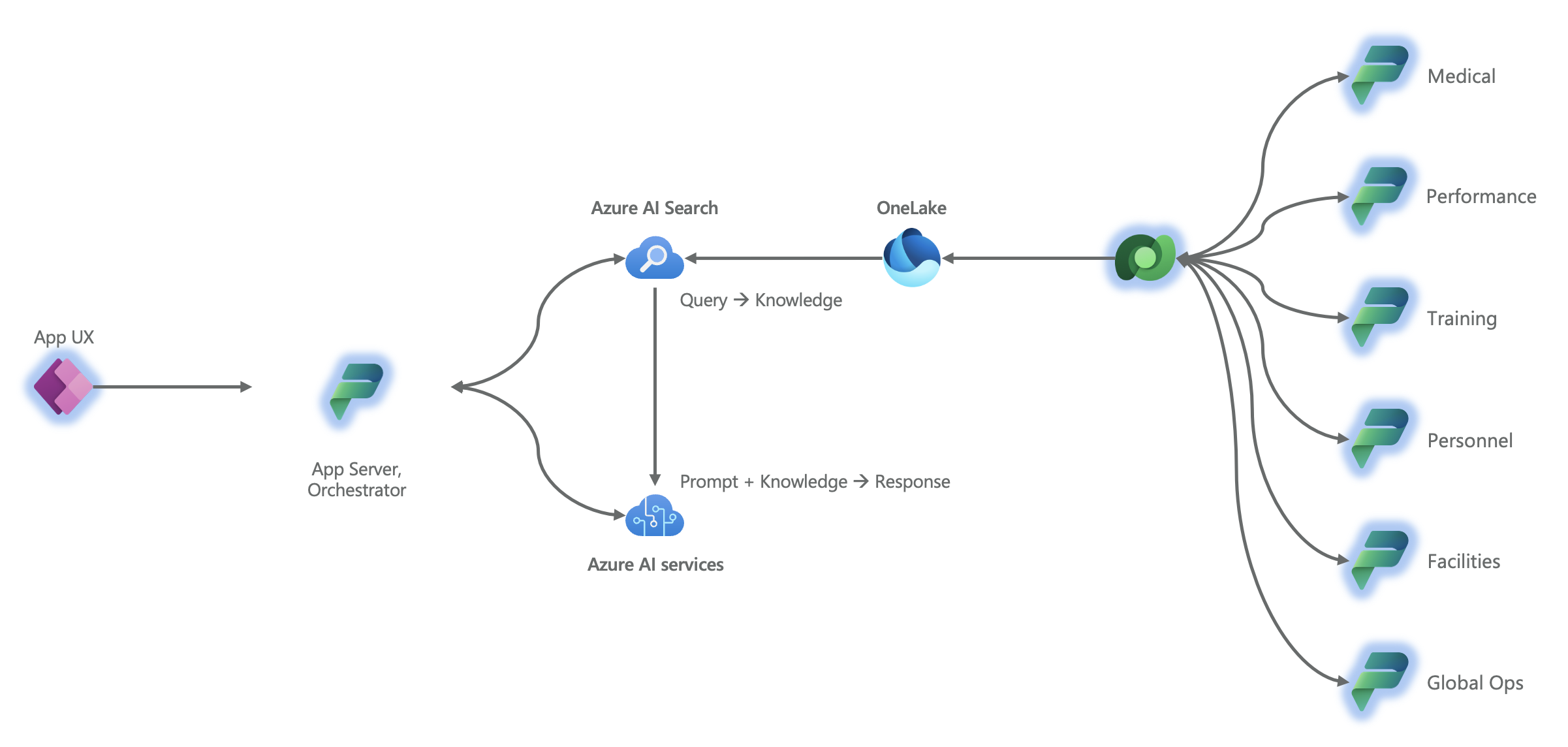
How Power Platform scales generative AI across an organization
Power Platform scales AI and the data platform by providing a composable means of both data collection and delivery of insights and AI capability back to the user. Meanwhile, the great, often unsung capability of Power Platform is not the “app”, rather the ability (via Dataverse) of data transacted in a Power Platform solution to hydrate downstream data distribution scenarios such as analytical workloads, enterprise search, and—you guessed it—whatever AI infused workload you dream up. Let’s explore this.
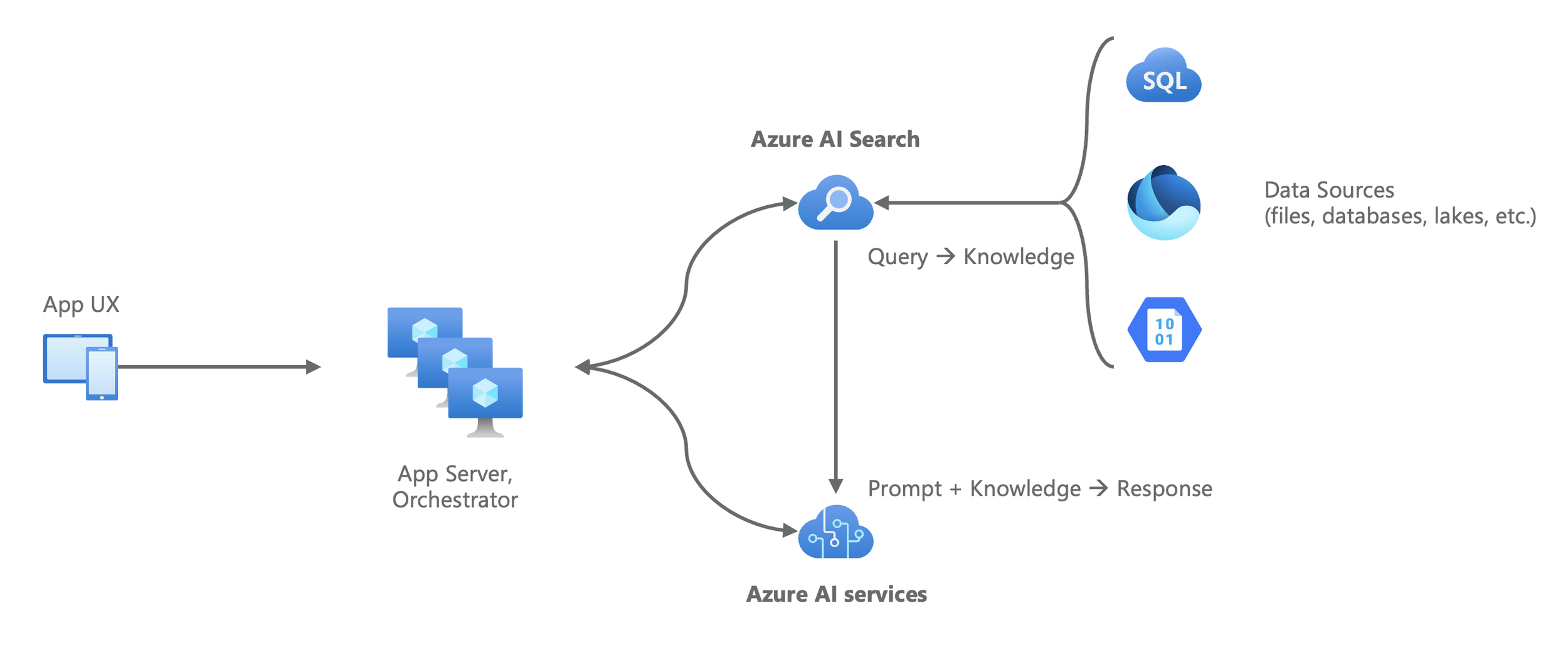
RAG and the fundamentals of AI acting on enterprise data
CIOs and enterprise architects need not be experts in the technical mechanics of AI to formulate and execute an effective AI strategy. That said, it is critical that leaders driving their AI strategy understand this basic concept of how institutional AI—that is to say, AI workloads specific to your organization—both requires and acts on enterprise data. This approach is what we call “Retrieval Augmented Generation” or “RAG”, which you may have heard of. The name is quite literal: Here we are augmenting the generative pre-trained (and now you know what “GPT” stands for) model with data that we have retrieved from the organization’s data estate.

Building future-ready cloud ecosystems for the age of AI
Discussing AI in recent months I have often thought about the fable of the boiled frog, whereby a frog placed in boiling water jumps out, but a frog placed in warm water that is gradually heated lacks awareness of his impending demise until it is too late. Or, as I continue to remind the CIOs with whom I work closely, the grace period for organizations to get their act together and position themselves for the next wave is growing much shorter, the margin for error much more narrow.
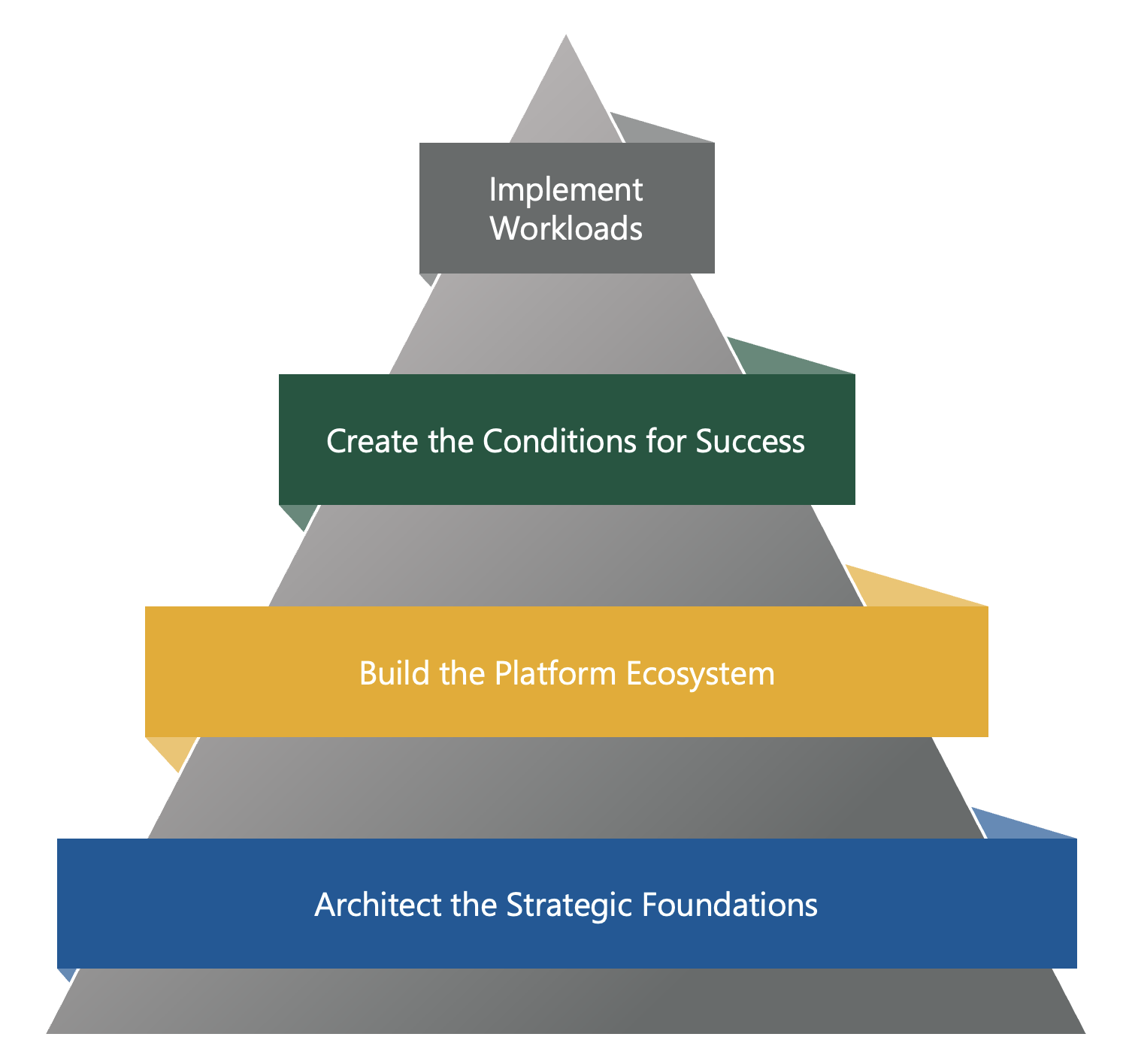
Understanding cloud ecosystem value and architecture via a “strategic pyramid”
Let’s consider a model for how organizations should be prioritizing their work and investments in the Microsoft Cloud. The imperative here could not be greater. Technological advancements are now moving on timelines that in some instances can be measured in weeks. Not months. Not years. But weeks. This both accelerates and is accelerated by the shift to system-based value. In other words, getting the platform ecosystem right in an organization is both necessary to creating the greatest likelihood that the organization can absorb rapid innovation, whilst simultaneously creating the conditions that drive that rapid innovation forward. But too many organizations have misallocated their focus up and down the value chain, prioritizing workload implementation either at the expense of or out of ignorance to architecting strategic foundations, building the platform ecosystem, and creating the conditions for success. That’s a bit esoteric, so let’s visualize this phenomenon as the “strategic pyramid”…
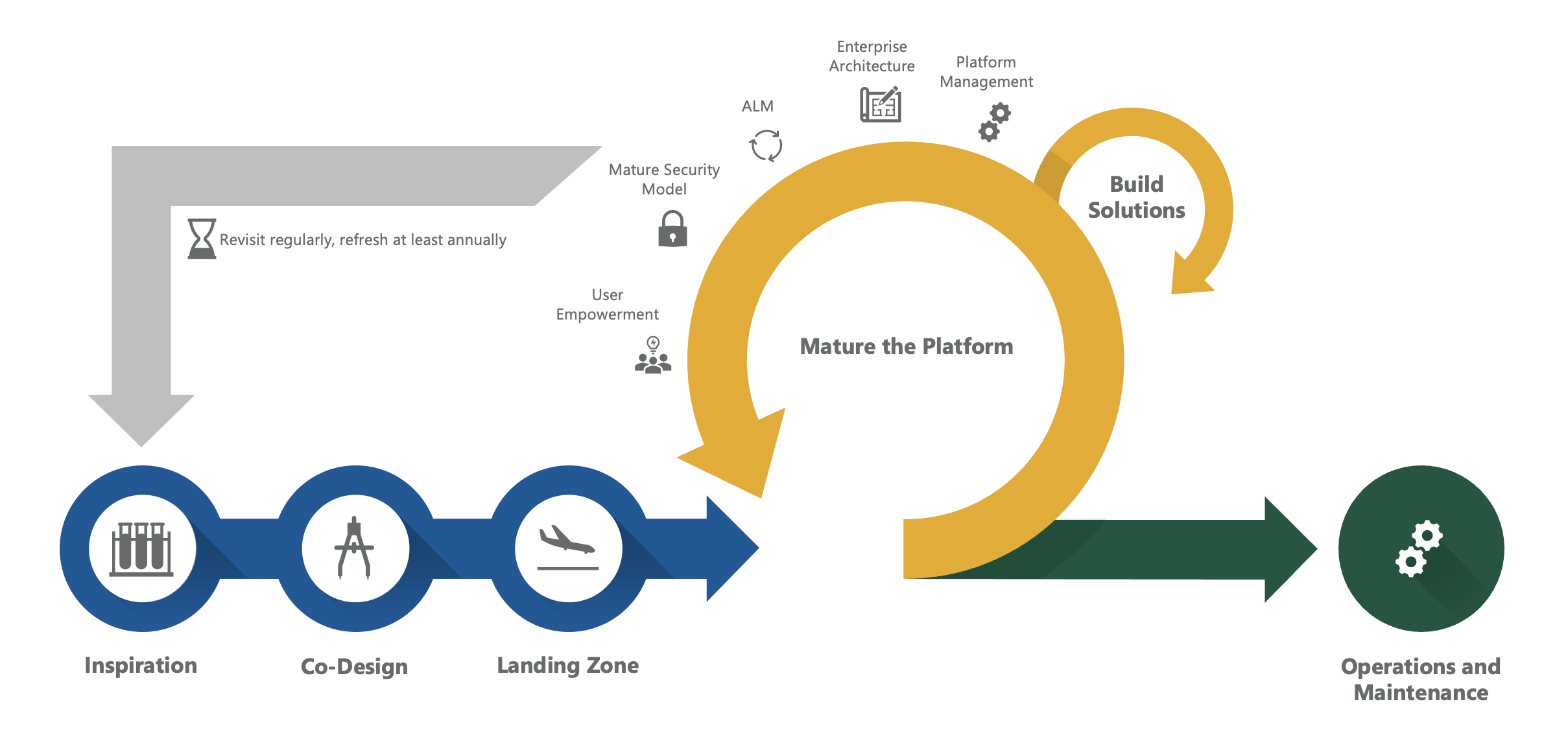
Strategic thinking for the Microsoft Cloud
I have come to understand strategic thinking as more art than science. Strategy is surely informed in part by data, but I find that our society in general and the technology industry specifically too often confuse data and wisdom, that we foolishly (though understandably) seek heuristics or processes so that we can turn the art of strategic thinking into a game of color by numbers so simple that anyone can do it. When it comes to strategic thinking, better that we seek methods of framing our thoughts rather than shortcuts to the answers themselves. So in this piece I have sought to offer practical approaches to injecting strategy into your organization’s Cloud journey, indeed, a selection of the same approaches I take with my clients.
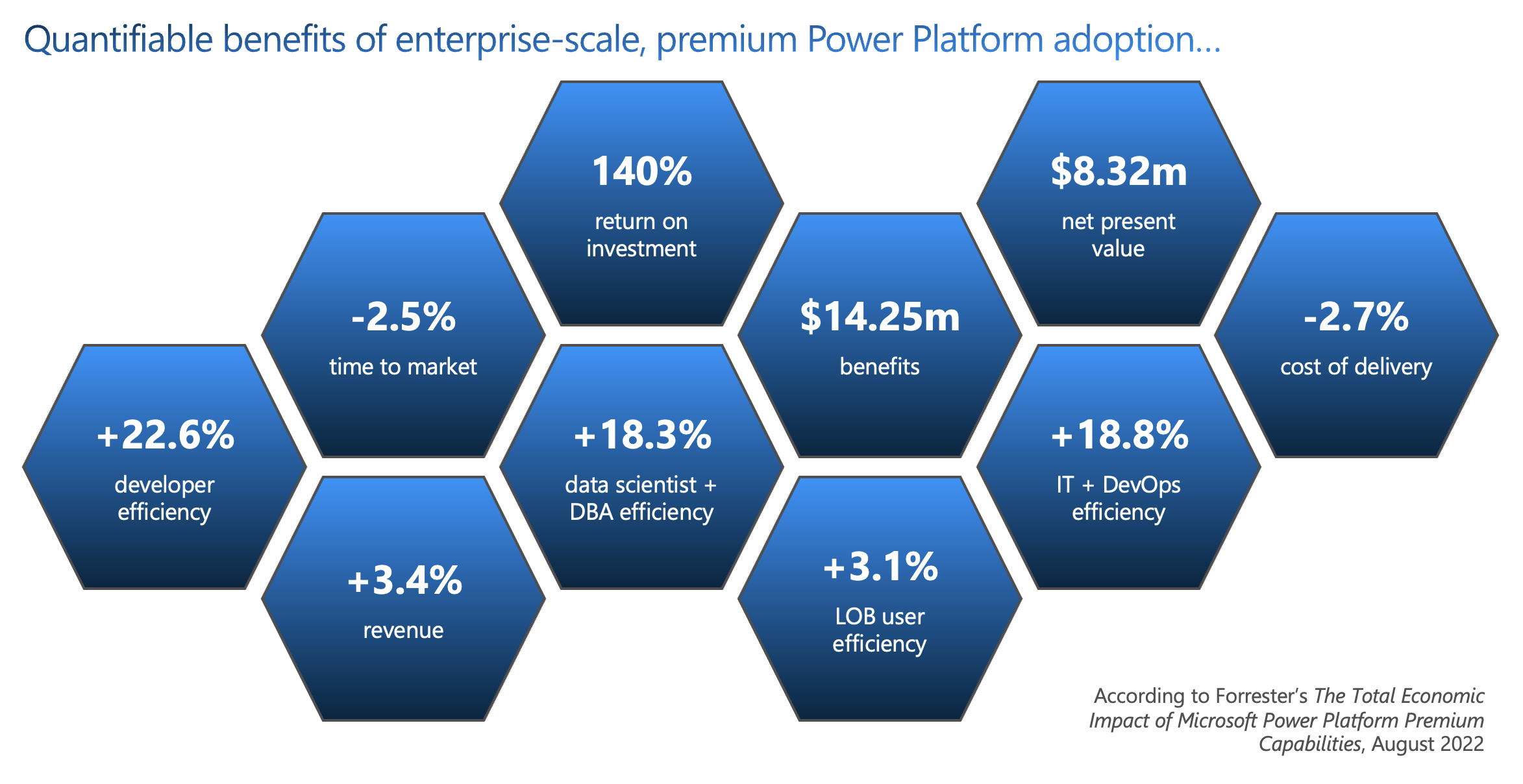
The “Tyranny of the Deliverable”, and other short stories about why you’re struggling to realize big value with Power Platform
Too many organizations are still struggling to go big with Power Platform not because of limitations in technology, but because of their own outmoded ways of doing business, though I know of no other move that IT decision makers in organizations across the economy and around the world can make that is likely to achieve results of this magnitude by—in effect—doing more with less. But the benefits of adoption are often dampened by three big, non-technical reasons that I see so many organizations failing or underperforming in their scaled, enterprise Power Platform adoption.
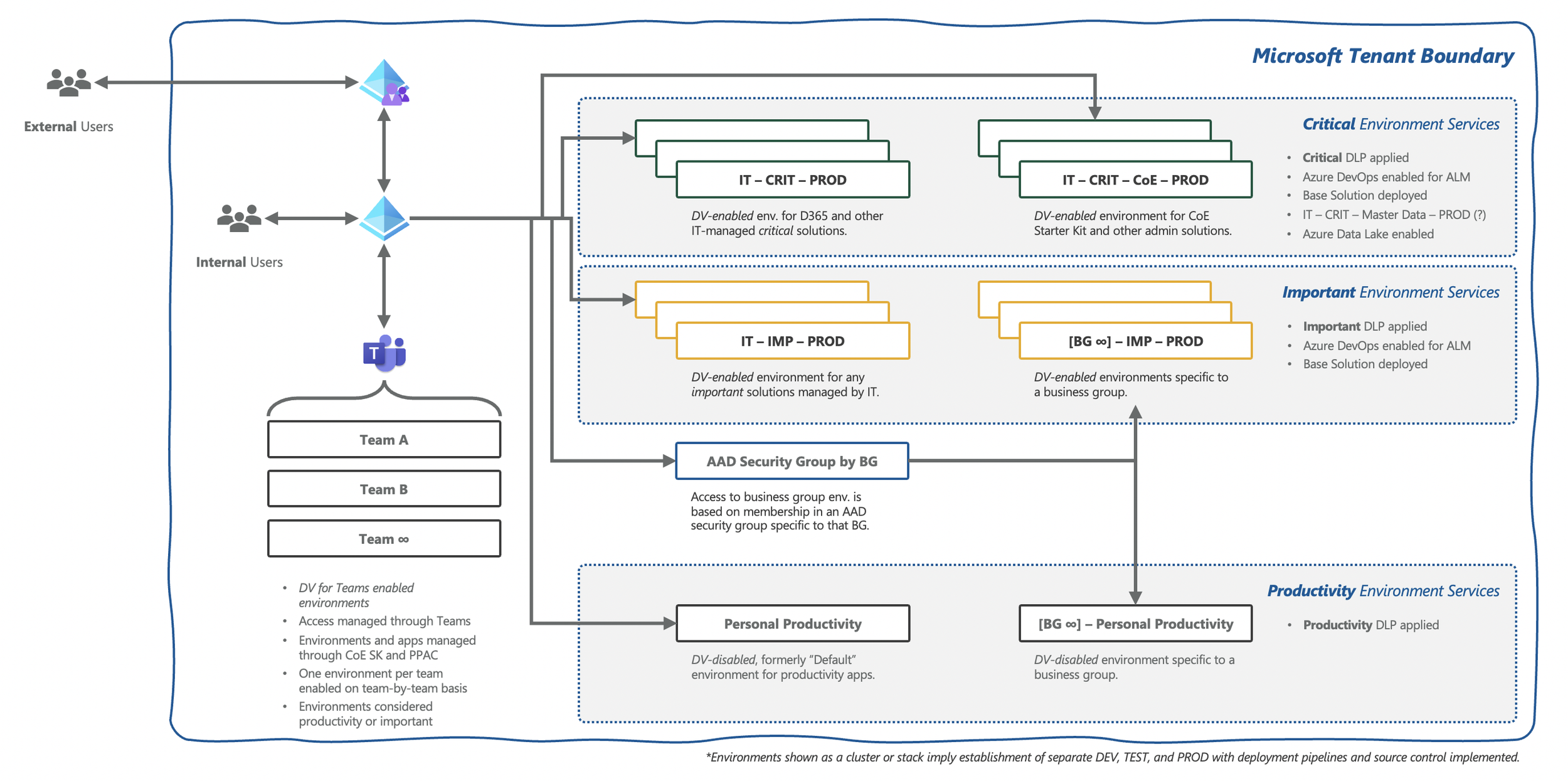
Reference Architecture for the “Landing Zone”, your indispensable foundation for scaling Power Platform
The Power Platform Landing Zone is the beginning of the path to overcoming these barriers. A foundation, if you will, the Landing Zone is the initial technical infrastructure plus governance of that infrastructure that allows an organization to begin “landing” workloads in Power Platform. With that in mind, a while back I set out to create a reference architecture for a Power Platform Landing Zone. In other words, if an organization were to build their Power Platform infrastructure properly, it would look a lot like this reference architecture.
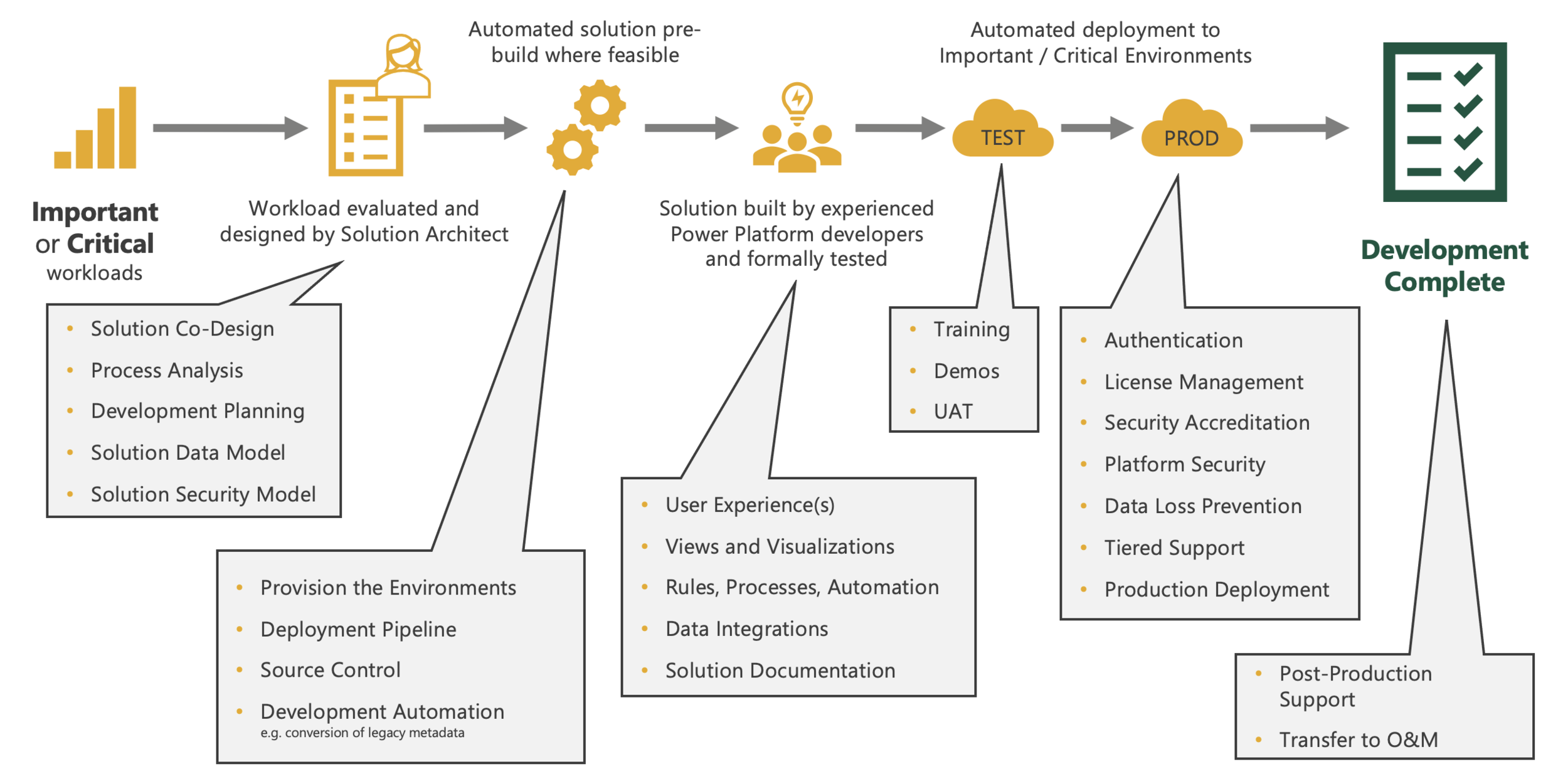
A Common (project) Framework for Solution Development with Power Platform
Here we’ll lay out a common framework (which we’ll refer to as “C-Frame”) for managing Power Platform solution development. This approach is best suited for solutions that classify as important or critical according to the Environmental Architecture Model found in the Power Platform Adoption Framework. If you take nothing else away from this approach, let it be this: Solution development of important and critical workloads produces far better outcomes and is significantly easier to manage when your team has in its own way accounted for all of these project activities.
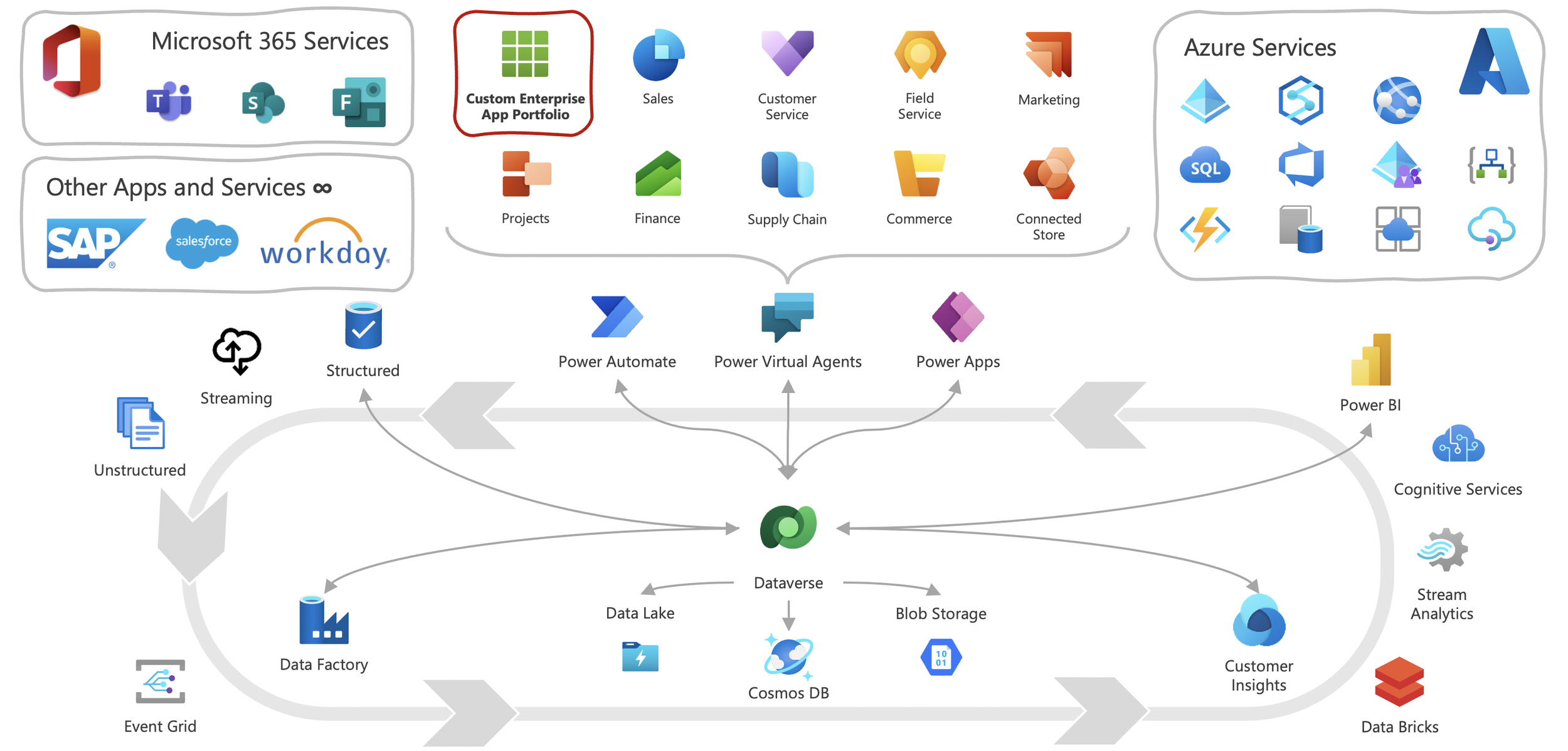
The Cloud Application Platform Era is a seismic, generational transition for cloud technology
We are experiencing a seismic, generational transition in the way that organizations buy, use, and enable their own success via technology. We’re now living in the Cloud Application Platform era, wherein organizations plan more strategically, make technical choices today that reduce the risk of being painted into a corner tomorrow, absorb new requirements rapidly, better fix costs across their ecosystem, and buy down the risk of unknown future needs. That’s what the Cloud Application Platform is all about.
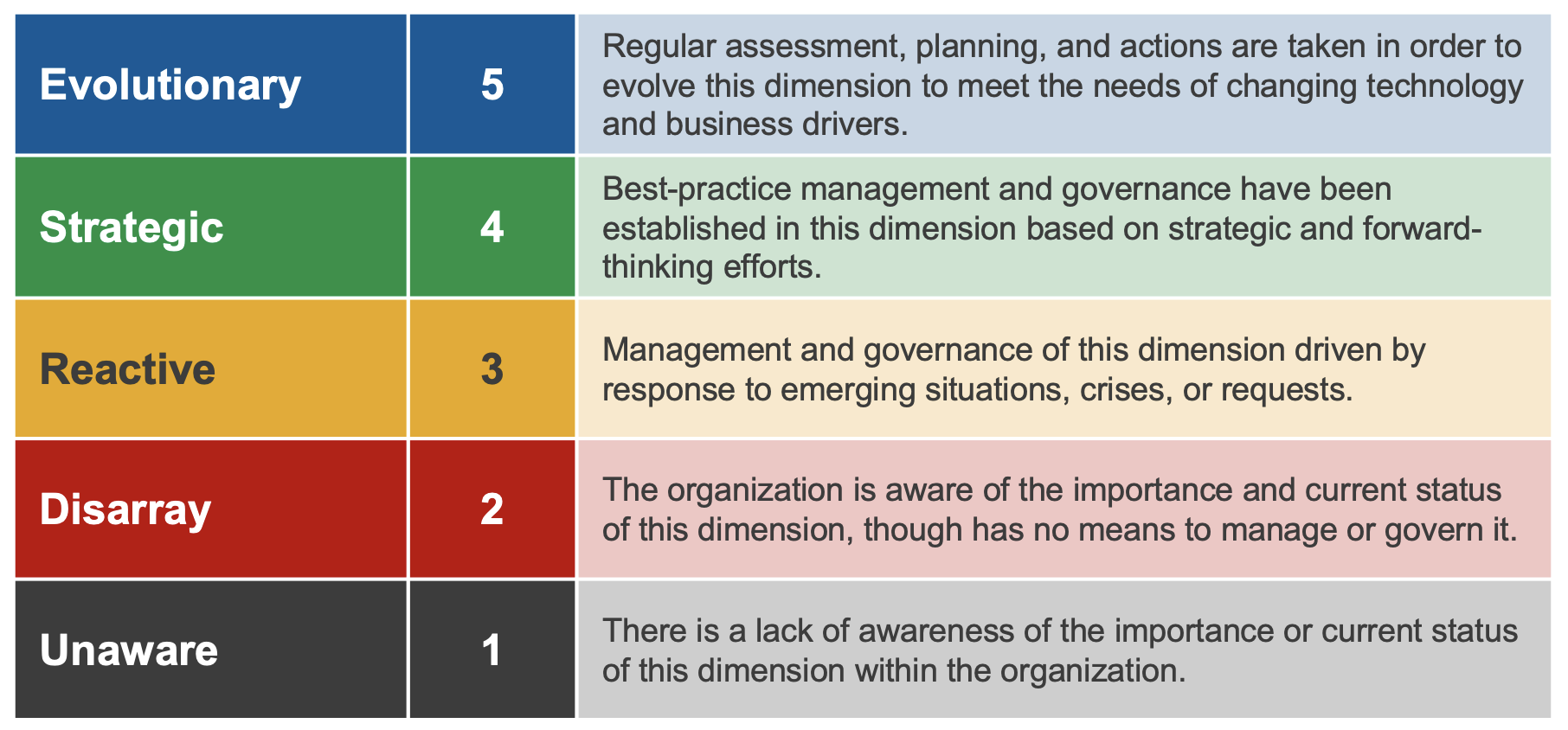
Assessing the maturity of your Power Platform enterprise management and governance
Organizations must continually mature their Power Platform enterprise management in order to unlock the platform’s value as a first-class cloud application platform and scale it over time. The Enterprise Management Maturity Model is the common standard that can be applied across the platform (and extended across the Microsoft Cloud as well) so that we may assess the maturity of enterprise management and governance, evaluate where an organization has made progress and remains less mature, and identify both organizational risk and opportunities to generate new business value.

